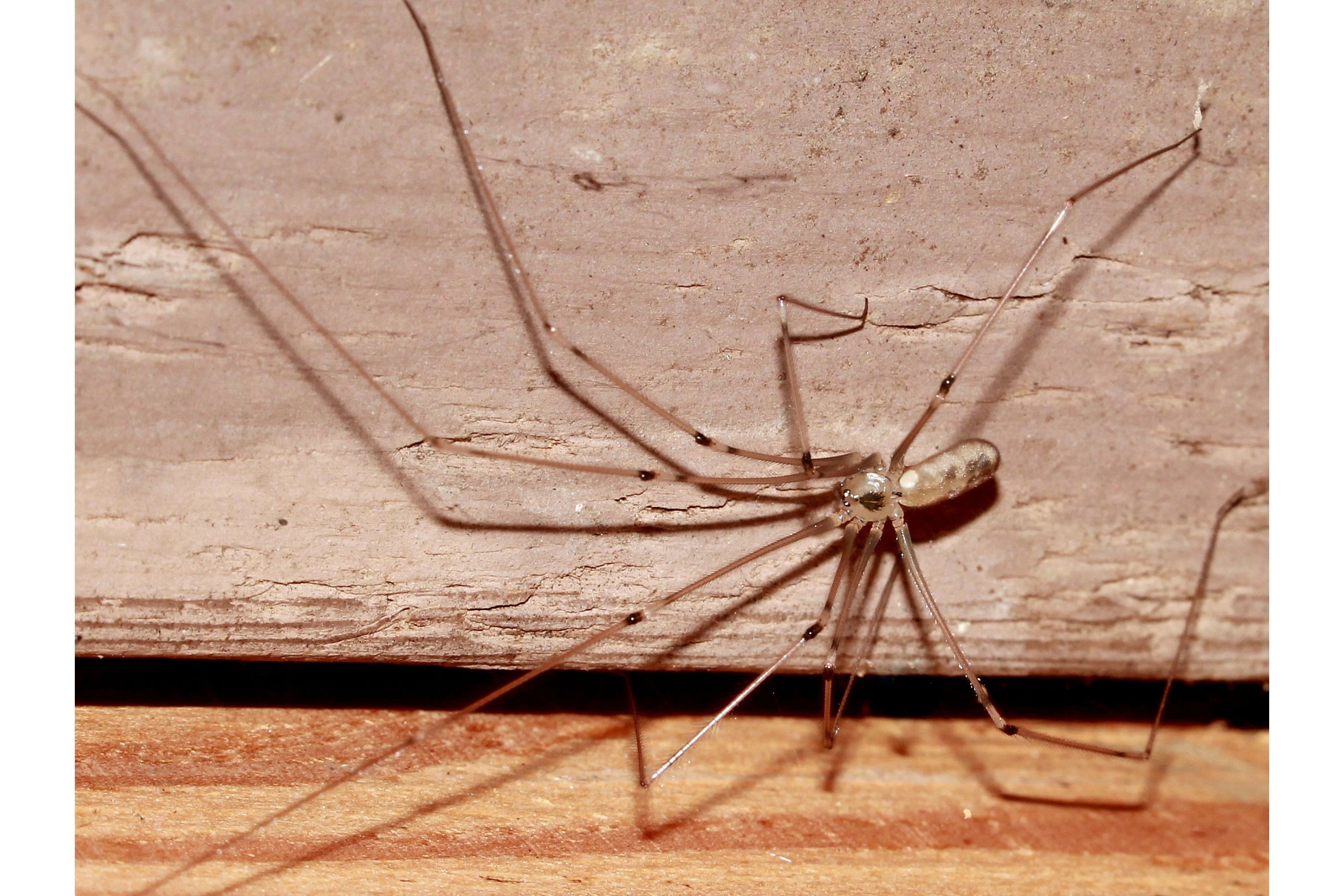Daddy long-legs
(Pholcus phalangioides)

Description
Pholcus phalangioides, commonly known as daddy long-legs spider or long-bodied cellar spider, is a spider of the family Pholcidae. It is also known as the skull spider, since its cephalothorax resembles a human skull. This is the only spider species described by the Swiss entomologist Johann Kaspar Füssli, who first recorded it in 1775. Its common name of "daddy long-legs" should not be confused with a different arachnid group with the same common name, the harvestman (Opiliones). Females have a body length of about 8 mm while males tend to be slightly smaller. The length of the spider's legs are on average 5 or 6 times the length of its body. Pholcus phalangioides has a habit of living on the ceilings of rooms, caves, garages or cellars. This spider species is considered beneficial in parts of the world because it preys on other spiders, including species considered dangerous such as redback spiders. However, when living in human buildings, it will primarily attack, kill and eradicate native spider species and, therefore, this invasive spider species has already been considered as very dangerous for the native spider fauna. Pholcus phalangioides is known to be harmless to humans and a potential for the medicinal use of their webs has been reported. This species is native to the subtropical regions of Asia, thus it has a preference for warmer, more humid climates. Meanwhile, a synanthropic species, the Pholcus phalangioides has largely had its modern geographic distribution determined by the evolution and spread of humans around the world. Today, these spiders can be found on every continent in the world but are especially concentrated in South America and Europe. P. phalangioides are not suited for survival in cold environments which is why they prefer the warmth of the indoors, specifically inside human dwellings. These spiders have a particular affinity for dimly lit, dark areas that are quiet and calm. They are commonly found in the corners of buildings and people's homes as well as in attics. Populations of Pholcus phalangioides living outdoors can be found in caves and in between rock crevices.
Taxonomic tree:







